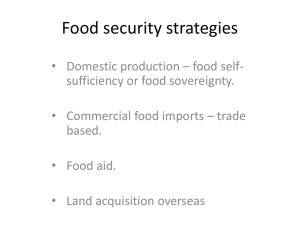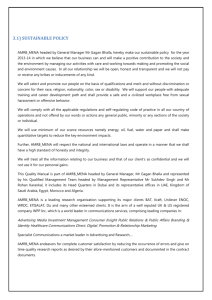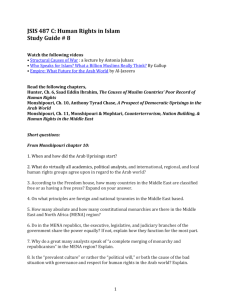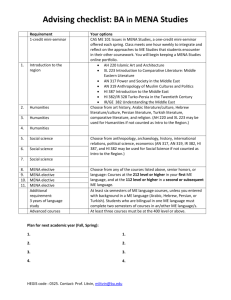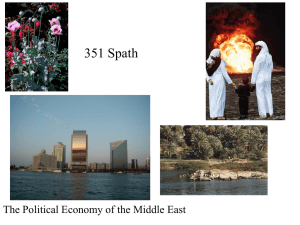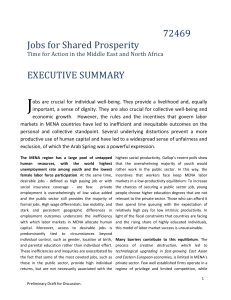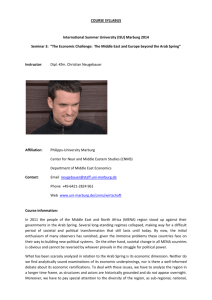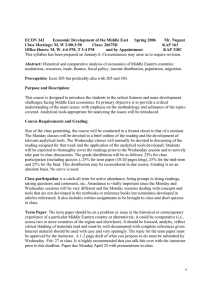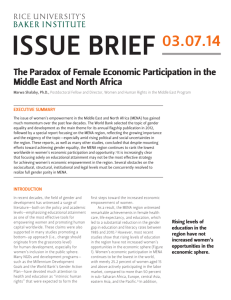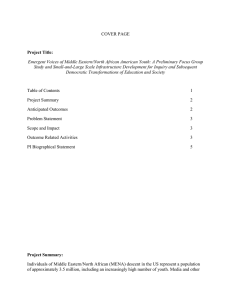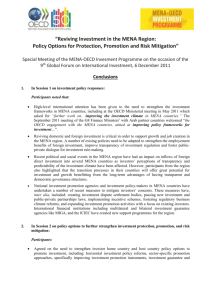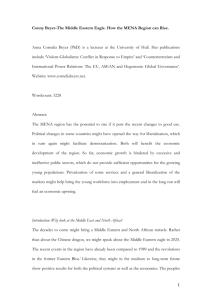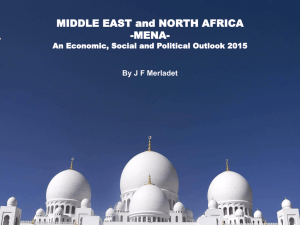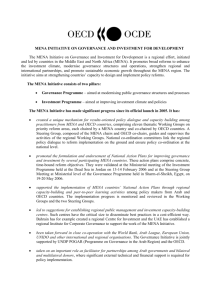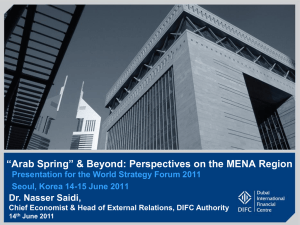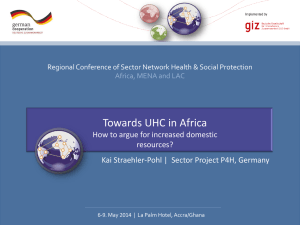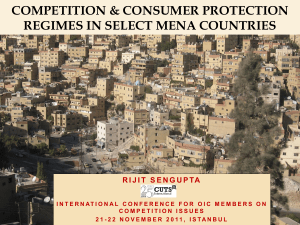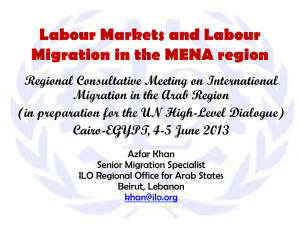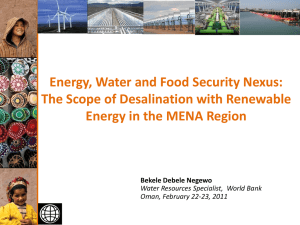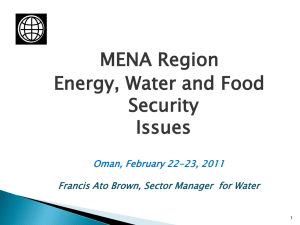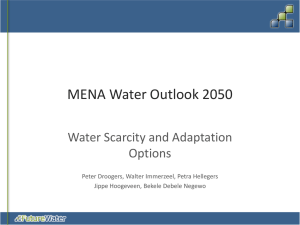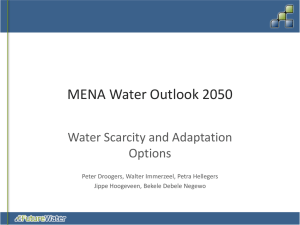Mr. Thomas J. Jacobs, Senior Country Officer – Lebanon, Middle
advertisement
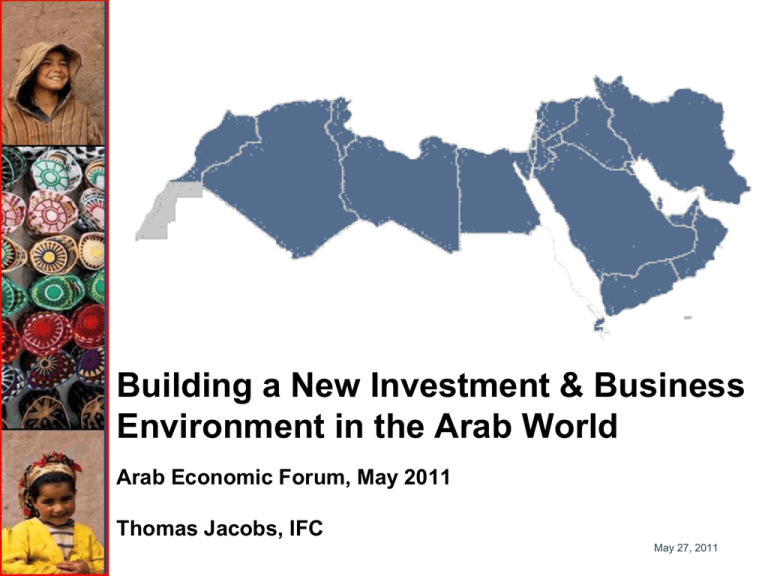
Building a New Investment & Business Environment in the Arab World Arab Economic Forum, May 2011 Thomas Jacobs, IFC May 27, 2011 International Finance Corporation World Bank Group IFC, IBRD, IDA, MIGA, ICSID Created in 1956 AAA/Aaa rating Invested $13 billion in FY10 IFC Mission To promote sustainable private sector investment in developing countries, helping to reduce poverty and improve people’s lives. What does IFC do? Invests via loans & equity Mobilizes capital from others Provides Advisory Services Why do we do it? To promote open, competitive markets in emerging markets To support companies & other private sector partners where there is a gap To help generate productive jobs & deliver essential services to the underserved To mobilize other capital that can contribute private enterprise development What’s behind the “Arab Spring”? Insufficient Voice and Accountability High Rates of Unemployment (Lower rank indicates worse score) Unemployment rate (%) Syria 30 Tunisia 25 Yemen Egypt 20 Jordan * MENA has the lowest female labor force participation rate in the world 15 Lebanon Turkey 10 Brazil India 5 0 10 20 30 40 50 60 70 Source: World Bank Governance & Anti-Corruption Indicators 0 EAP Access to Finance Lowest in the World ECA LAC SA MENA MENA (Youth) MENA (Female) % of firms with a loan credit from a financial institution 17% of population living <$2/day High clustering around poverty line – increases vulnerability of poor to shocks MENA population growing rapidly 48 million jobs needed over the next decade Voice and accountability worsened over the last decade in almost all MENA countries Labor skills mismatch causing frustration among educated youth Employment: (the?) Major issue in Arab World 48 million jobs needed over the next 10 years MENA Jobs will have to come from the private sector Public agencies and state-owned enterprises cannot create sufficient jobs in a sustainable manner Private enterprises will only invest and create jobs within a conducive business environment Investment climate weaker in lower-income countries Doing Business has been an important catalyst of business environment reforms in the MENA region Saudi Arabia Bahrain United Arab… Qatar Tunisia Oman Kuwait Egypt, Arab Rep. MENA Yemen, Rep. Jordan Lebanon Morocco Iran, Islamic Rep. West Bank and Gaza Algeria Syrian Arab Republic Djibouti Iraq 11 28 40 50 55 57 74 94 96 105 111 113 114 129 135 136 144 158 166 Source: Doing Business 2011 Little diversification in Arab economies ….. and MENA exports tend to have a low technological input. Main Pillars of New Business Environment Services and Moving up the Value Chain Micro and Small Scale Enterprise Development PPPs in Infrastructure and Social Services Competition and Innovation Growth Employment All underpinned by an …. Enabling Investment Climate Efficient Financial Markets Economic Integration in the Arab World And an increasing focus EAST and SOUTH (Asia and Africa) 1. Promote Competition & Reform Structures A. Remove the rents • Eliminate barriers to entry; open trade and investment. • Reduce conflicts of interest between public servants & investors. • Address competition issues (such as monopolies). Example: Promote the creation of competition authorities B. Reform institutions & processes • Increase transparency, accountability, measurability. • Modernize public sector & cut out red tape. Example: Improve governance & transparency while simplifying to make it easier for firms to start and operate. 2. Strengthen policy-making & encourage innovation C. Improve process of policy-making • Establish sustainable and robust process of private sector consultation. • Streamline decision-making and improve inter-ministerial coordination. Create public-private dialogues that engage stakeholders in common goal D. Innovate through knowledge • Support new product development with a higher technological input. • Harness the Power of the Diaspora for ideas, capital and connections. • Increase use of ICT in production processes & products/service mix. Concentrate efforts on knowledge sectors -- ICT, health care, education… 3. Improve climate for PPPs E. Focus on regulatory framework & education • Infrastructure is a major constraint for most MENA countries • $100B/year of investment in infrastructure needed to sustain 5% growth. • Power, transport, education, health care, water, etc. Create dedicated PPP units and pilot specific transactions G A P $100B / yr for Infrastructure needed across MENA Actual Investment $60B – 70B per year More and Better Public Investments More Private Investments - PPPs 4. Concentrate on MSMEs Over 95 percent of MENA enterprises are MSME’s – the majority of which are microenterprises – employing less than 5 to 10 workers …… Size breakdown (% of all MSMEs) 100% 90% 80% 70% 60% 50% 40% 30% 20% 10% 0% Source: WB MSME Country Indicators Medium Small Micro 4. Services & Moving up the Value Chain MENA: Can’t compete with Asia & Africa for high labor content products. Should focus on products with a higher skill content – and are produced further up the value chain. ICT and services (education, tourism, health care, etc) offer considerable scope and potential for further development. Improving technological content of goods produced will also add value to MENA produced goods. Deepen regional integration Intra - Arab integration remains a challenge…. Source: WDI WBG’s Arab World Initiative: fosters economic integration and knowledge sharing Re-Focus EAST and SOUTH Focusing increasingly more on the highest growth region – and the proximate region with the greatest growth potential. The new business environment must: Promote competition Be more inclusive, esp. for youth & women Leverage private sector resources Enable greater investments in infrastructure Invest in knowledge Focus on MSMEs => CREATE SUSTAINABLE JOBS ًشكـرا, Merci, Thank You
